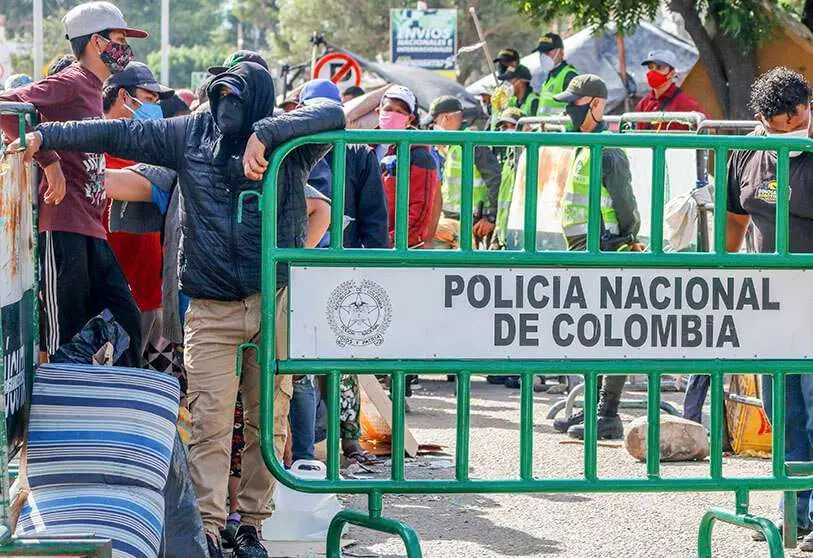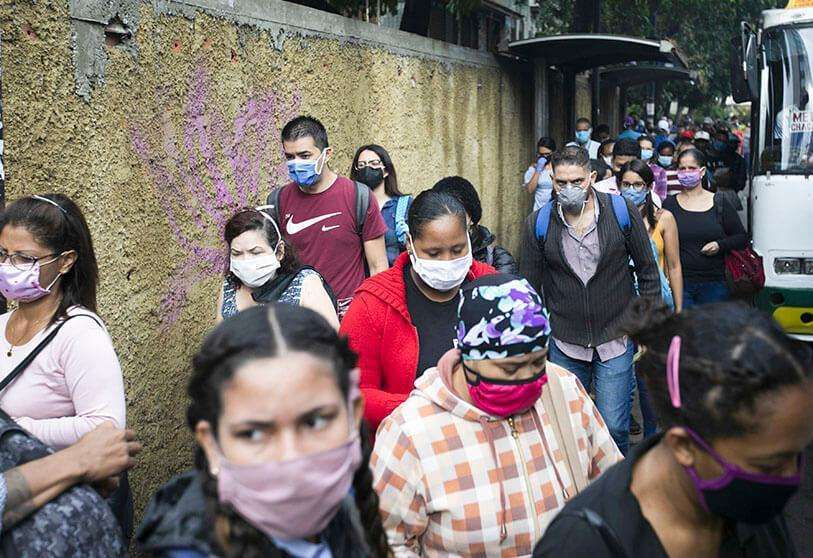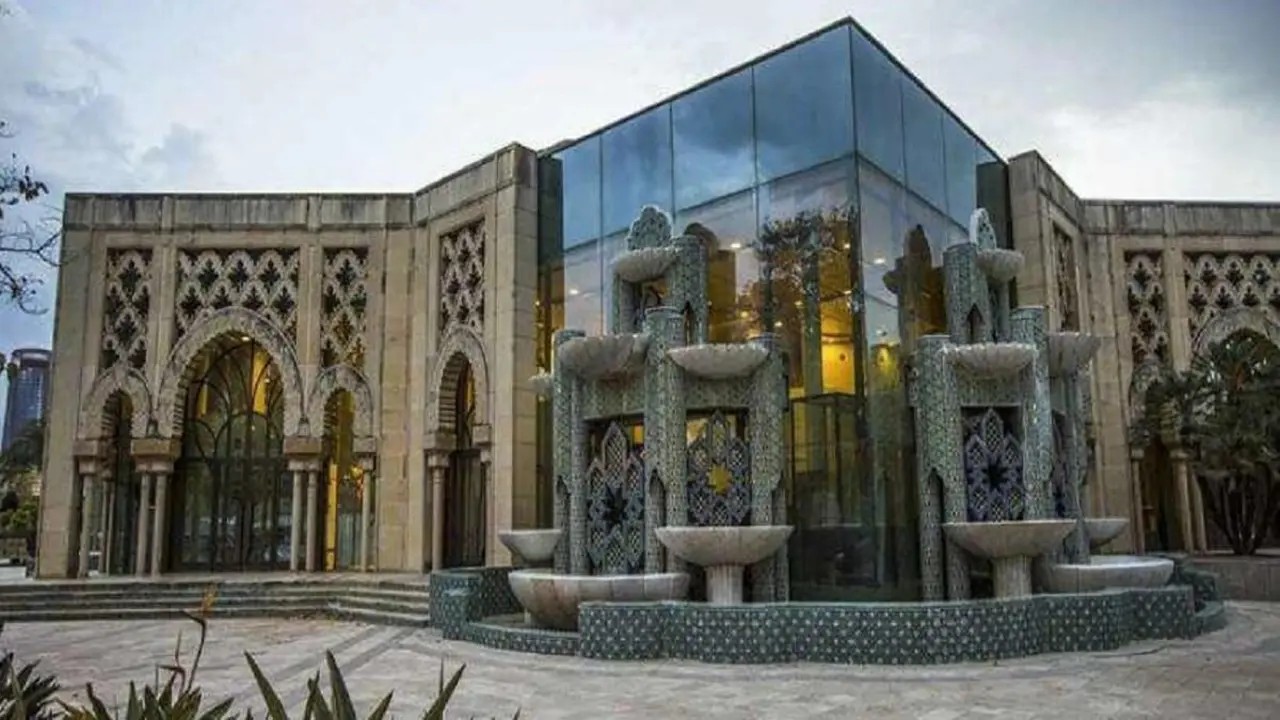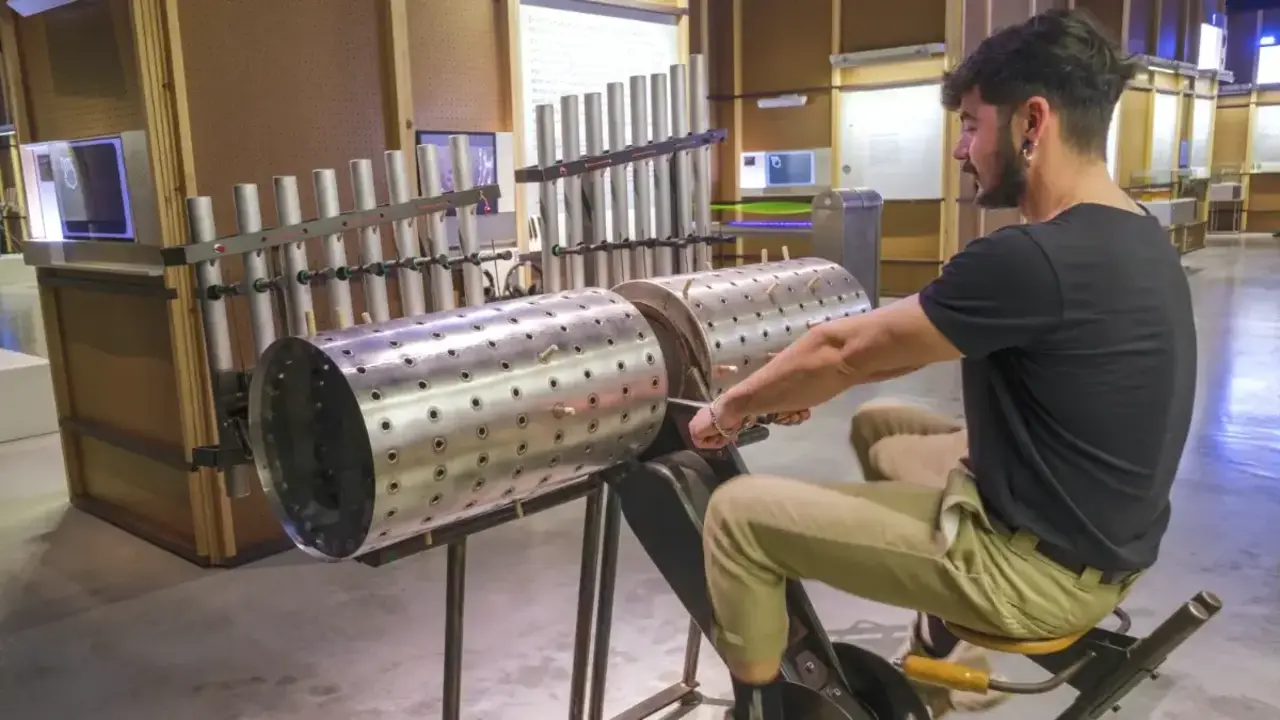The path of light and shadow for Venezuelan migrants in Latin America

Nearly 6 million Venezuelans have left their country in recent years according to the United Nations Refugee Agency (UNHCR) and a new chapter of lights and shadows has recently opened in Latin America, where while Colombia opts for their regularization Chile deports them, showing that their illegal stay is a problem in full pandemic.
Despite the closing of borders due to the coronavirus, between 500 and 700 migrants and refugees from Venezuela continue to leave their country daily, mainly through Colombia, according to the UNHCR.
"There are almost 6 million Venezuelans who fled their country and the vast majority are in the region. That number is almost the same population as the Syrian exile population. The Venezuelan is one of the two or three largest displacement situations in the world", said UNHCR High Commissioner Filippo Grandi in an interview with Efe during his visit to Costa Rica last week.
Refuge, asylum, residence or temporary permits are the mechanisms to which they turn or that governments have activated in the midst of some episodes of discrimination of which they are victims, in addition to their unclear situation in the face of vaccination against COVID-19.
Colombia is the main destination of Venezuelans who choose to stay or migrate to other countries in South America, becoming the largest recipient and, in view of the migratory crisis, the country will legally receive some 2 million regular or irregular immigrants with a Temporary Protection Status for 10 years.
President Iván Duque pointed out that measures such as the one announced are aimed at alleviating the situation of Venezuelans in need "with fraternity, solidarity, equity and with the support of the international community", while the country will buy 2 million vaccines against COVID to immunize immigrants who regularize their status.

Initially, one of the most important gateways for Venezuelans was Ecuador, where it is estimated that more than 400,000 people of that nationality reside, of the 1.7 million who have passed through its territory since 2017, most heading to Peru and Chile.
But due to the economic crisis, since 2019 it is no longer a promising destination and the pandemic has only aggravated the situation, which is why thousands have left the country.
Peru is now the second country, after Colombia, in welcoming the largest number of Venezuelans who, according to official figures as of August 2020, slightly exceed one million people, although organizations such as the World Bank (WB) indicate that they reach 1.2 million.
The arrival of Venezuelans increased during the government of Pedro Pablo Kuczynski (2016-2018), who decided to grant a Temporary Stay Permit (PTP), but then the Executive of Martin Vizcarra (2018-2020) established, in 2019, the requirement of a humanitarian visa.
The country has already begun vaccinating its population against COVID and will also inoculate Venezuelan resident migrants.
In the case of Mexico, with 52,948 Venezuelans in total, the Mexican Commission for Refugee Aid (Comar) of the Ministry of the Interior (Segob) reported 3,439 asylum applications in 2020, an annual drop of 57.4% compared to 8,072 the previous year.
For its part, Segob's Migration Policy Unit (UPM) recorded 3,992 cases with a Visitor's Card for Humanitarian Reasons (TVRH) with not a single deportation.
Brazil has 264,000 refugees or immigrants from the neighboring country, more than twice as many as three years ago, specifically in the city of Pacaraima, in the impoverished state of Roraima.

Some 10,000 Venezuelans, between refugees and migrants, reside in Bolivia and during the administration of the former interim president Jeanine Áñez, the country took resolutions such as facilitating the entry of undocumented minors and free regularization, while the government of Luis Arce has not expressed itself for now about its future.
Last Wednesday, Chile expelled 138 foreigners, mostly Venezuelans, due to the delicate situation between its border and Bolivia. Neither the pandemic nor the social crisis that began in 2019 have managed to curb the entry of Venezuelans, who represent 30% of total migrants and are the largest community and the one that has grown the most, according to the National Institute of Statistics, increasing by 58% in 2019.
In Argentina, as of November 2020 there were 217,848 Venezuelans settled in Argentina, according to a report released by the Diplomatic Representation of the National Assembly of Venezuela based on data from the Directorate of Migration.
Uruguay registers 18,000 people who have taken up residence, according to the Manos Veneguayas Organization due to the fact that the country has many facilities for their arrival, while Paraguay has 1,419 permanent residents, according to data provided to Efe by the Directorate of Admission of Foreigners and Migration.
Last year, Paraguay granted temporary residency to 619 Venezuelans, of which 519 are refugees, while 100 obtained it thanks to law 978/96, which seeks to attract foreign labor force to the country.
According to data from the International Organization for Migration (IOM), more than 90,000 Venezuelans reside in the Dominican Republic, for which reason the government decided on January 22 to temporarily extend the stay of Venezuelans residing in the country in an irregular manner.

This is one of the derogatory phrases most often heard in some countries in the region where outbreaks of xenophobia have stigmatized the Venezuelan population.
In Colombia, the rejection of the presence of Venezuelans is increasingly latent due to the news circulating in the media where immigrants are involved in robberies of citizens and in public transportation pointing them to the high levels of insecurity in cities such as Bogota, Medellin and Cali.
This sentiment is also present in Peru, where the mayor of San Juan de Lurigancho, in the municipality of Lima, Álex Gonzáles Castillo, pointed out that in his jurisdiction the most violent crimes are committed by foreigners.
However, according to data shared by the Government of Lima with UNHCR, only 1.8% of all complaints filed in the country are against Venezuelans.
Argentina reacted with indignation to the rape of a young Venezuelan woman allegedly at the hands of her boss in the Buenos Aires neighborhood of Once, which generated all kinds of demonstrations from both the Venezuelan community and the broad Argentine political and social spectrum.
In the impoverished and bordering Brazilian state of Roraima, in 2018 a group of inhabitants of Pacaraima demonstrated against the presence of Venezuelans by burning their personal belongings and the tents in which they slept.
Fortunately that kind of xenophobic discourse was changing: in the November municipal elections 3 of the 11 candidates for mayor of Boavista, the state capital, took as a political banner the alleged "threat" of Venezuelan immigration, but none of them was elected.








